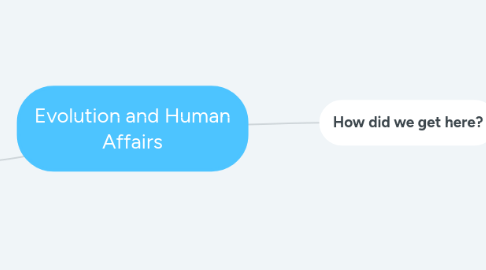
1. Where are we?
1.1. Problems of Input
1.1.1. Land
1.1.1.1. Arable
1.1.1.2. Non-Arable
1.1.1.3. Frozen
1.1.2. Minerals
1.1.2.1. Dwindling Reserves
1.1.2.1.1. Mineral Extraction
1.1.2.2. Recycling
1.1.3. Forests
1.1.3.1. Deforestation
1.1.3.1.1. Desertification
1.1.4. Water
1.1.4.1. Freshwater
1.1.4.1.1. Agriculture
1.1.4.1.2. Industry
1.1.4.2. Seawater
1.1.5. Soil
1.1.5.1. Nutrient Depletion
1.1.5.1.1. Soil Erosion
1.1.6. Food
1.1.6.1. Population Growth
1.1.6.1.1. Positive Feedback Loop
1.1.6.2. High Production
1.1.6.2.1. Low Food Price
1.1.7. Energy
1.1.7.1. Renewable
1.1.7.1.1. Solar
1.1.7.1.2. Hydro
1.1.7.1.3. Wind
1.1.7.2. Non-Renewable
1.1.7.2.1. Fossil Fuels
1.1.7.2.2. Nuclear
1.2. Problems of Output
1.2.1. Pollution
1.2.1.1. Major Sources
1.2.1.1.1. Industry
1.2.1.1.2. Agriculture
1.2.1.1.3. Transportation
1.2.1.2. Major Pollutants
1.2.1.2.1. Ground-level ozone
1.2.1.2.2. Airborne mercury deposition
1.2.1.2.3. Acid rain (sulfur and/or nitrogen emissions)
1.2.1.2.4. Excess nitrogen deposition
1.2.2. Climate Change
1.2.2.1. Causes
1.2.2.1.1. Loss of vegetation biomass
1.2.2.1.2. CO2 emissions
1.2.2.2. Effects
1.2.2.2.1. Rising global surface temperature
1.2.2.2.2. Ocean acidification
1.2.2.2.3. Storms and floods
1.2.2.2.4. Halting global ocean conveyor
1.2.3. Population
1.2.3.1. Current State
1.2.3.1.1. Developing countries
1.2.3.1.2. Developed countries
1.2.3.2. Consequences
1.2.3.2.1. Malthusian Dilemma
1.2.3.2.2. Economic imbalance
1.2.4. Waste
1.2.4.1. Overflowing landfills
1.2.4.2. Insufficient recycling
1.2.4.3. Abundance of plastics in ocean
1.2.5. Health
1.2.5.1. Disease rising despite medical advances
1.2.5.2. Environmental degradation
1.2.5.2.1. Strong contributor to global deaths
1.2.6. Mass Extinction
1.2.6.1. Habitat loss
1.2.6.1.1. Biodiversity loss
1.2.6.2. >50% extinction rate in last 4 decades
1.2.7. Ecological Footprint
1.2.7.1. I=PAT
1.2.7.1.1. IMPACT on ecosystem
1.2.7.1.2. POPULATION size
1.2.7.1.3. AFFLUENCE per capita
1.2.7.1.4. TECHNOLOGY
1.2.7.2. Biocapacity
1.2.7.2.1. Ecological footprint not sustainable
1.2.7.2.2. HDI
2. How did we get here?
2.1. The March of Progress
2.1.1. The Agricultural revolution
2.1.1.1. Class division
2.1.1.2. Plant and animal domestication
2.1.1.2.1. Irrigation
2.1.1.3. Increase human population
2.1.1.3.1. increase starvation and famine
2.1.1.4. infectious diseases and parasites
2.1.1.5. Exacerbated sexual inequality
2.1.1.6. Oil deficiency
2.1.1.7. Environmental destruction
2.1.2. Interventions
2.1.2.1. First written text
2.1.2.1.1. innovations upon existing invention
2.1.2.1.2. the great forgetting
2.1.2.1.3. laws
2.1.2.2. Technology for metallurgy
2.1.2.2.1. sward
2.1.2.3. Religions emerge
2.1.2.3.1. drug abuse
2.1.2.4. The middle age
2.1.2.4.1. suffering
2.1.3. The Industrial revolution
2.1.3.1. production of coal and oil
2.1.3.2. increased industry and agriculture
2.1.3.2.1. steel
2.1.3.3. crowded cities
2.1.3.4. anguish people
2.1.3.5. distress for the lower class society
2.1.3.6. totalitarian agriculture
2.1.3.7. totalitarian medicine
2.2. Becoming human and discovery of self
2.2.1. The human journey
2.2.1.1. Bipedalism (3-6 million BP)
2.2.1.1.1. Heat stroke prevention
2.2.1.1.2. Release of arms
2.2.1.1.3. Long distance travelling
2.2.1.2. Large Brain Size (2.5 million BP)
2.2.1.2.1. Evidence in Homo erectus
2.2.1.3. Signs of empathy, love and religion belief
2.2.1.3.1. The great leap forward
2.3. Darwinian evolution
2.3.1. Anti-Darwinist
2.3.2. Non-material Darwinist
2.3.3. Materialist Darwinist
2.3.3.1. Blank-slate Darwinist

